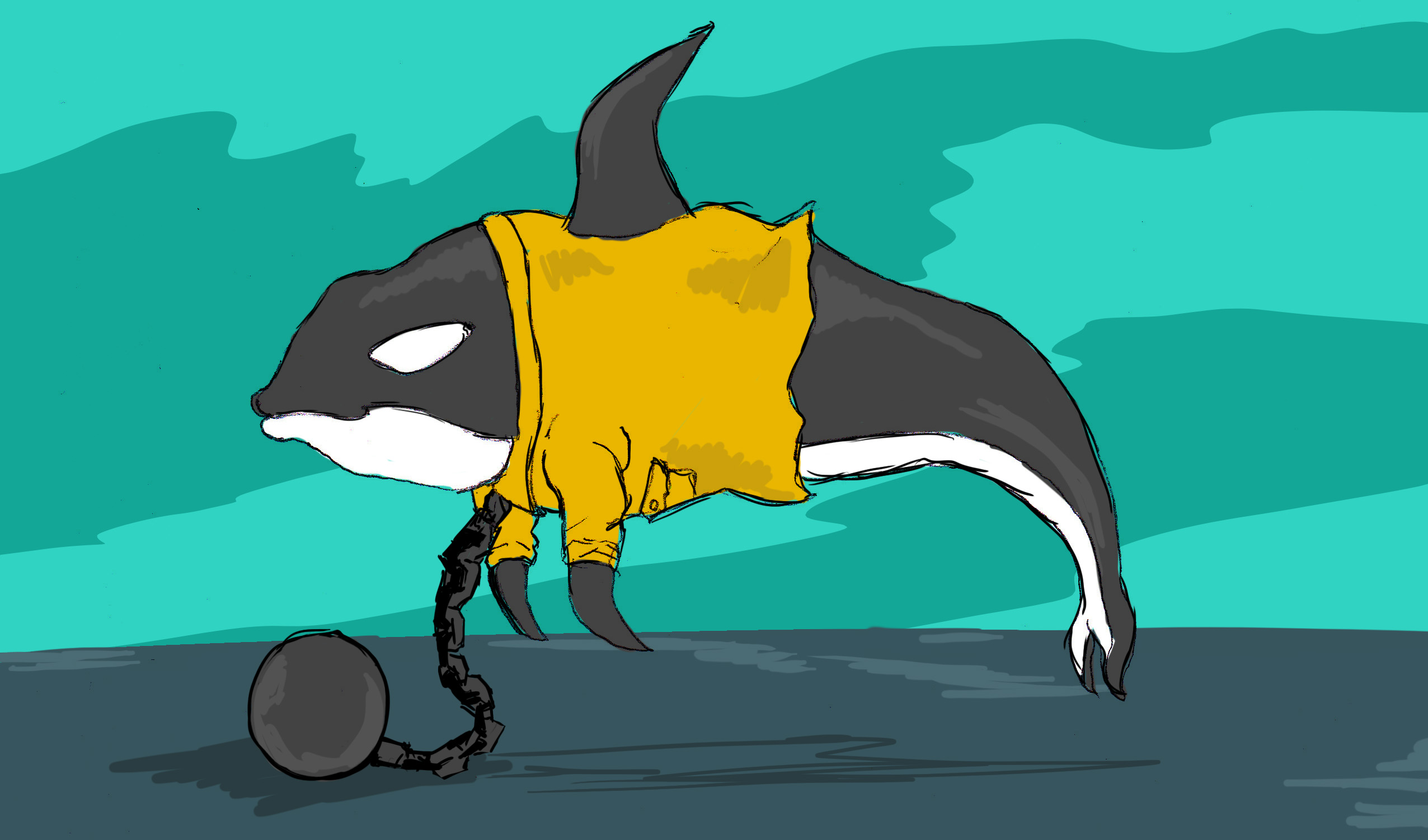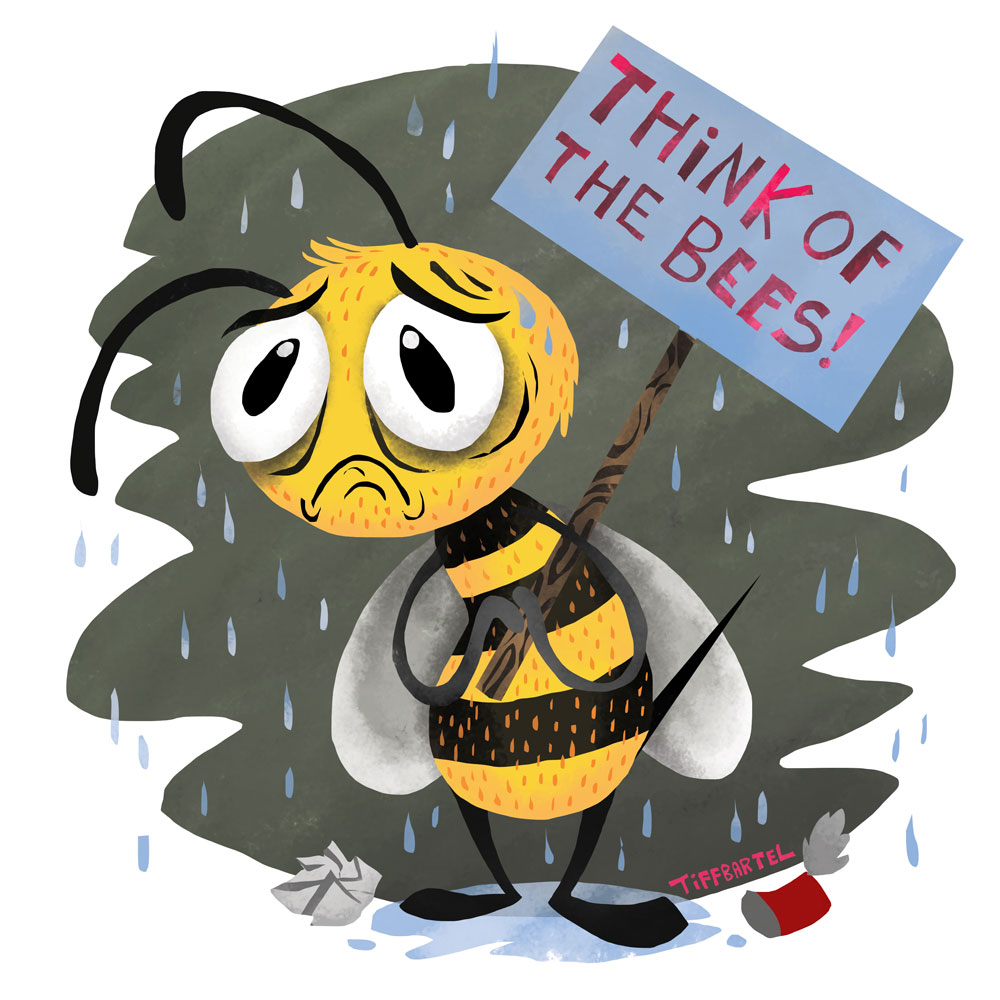My first encounter with captured orcas took place at the age of 10 at SeaWorld Orlando. My family filed in with the rest of the unassuming crowd to watch the trainers ride with the iconic whale Shamu in what must have been a relatively claustrophobic aquatic environment for a cetacean of that magnitude.
I’d also, around this age, witnessed an eager pod of killer whales jumping from the surface of the ocean while on a ferry from Vancouver to Victoria. In my awed and naïve state during these two scenarios, I likely couldn’t differentiate the significance between the artificial captivity experience and the sublime wild one. I wanted to get as close to these creatures as I could, not considering their welfare or that of the trainers, but wanting a personal relationship with them for my own sake.
Unfortunately, the relationship we want with these animals is at odds with their actual well-being and, as a result, human safety.
The anti-captivity argument takes many facets, but the one I’ll focus on is related to preventable deaths of trainers and other human beings.
SeaWorld has shouldered much backlash since the bull orca Tilikum brutally killed trainer Dawn Brancheau in 2010. Tilikum and two other whales were involved in the 1991 drowning of trainer Keltie Byrne, in which she fell into the tank and was held under water by one of the whales. This occurred at Sealand of the Pacific in Victoria, which closed its doors following the incident. Tilikum killed one more person in between these two horrific occurrences: Daniel Dukes, a man who snuck into the tank at SeaWorld after hours and was found dead and partially dismembered in Tilikum’s mouth the next morning.
Tilikum is not the only SeaWorld-owned whale that has killed a trainer. Loro Parque, a marine park in the Canary Islands, took in some “loaner” whales from SeaWorld. Trainer Alexis Martinez was killed by the whale Keto there in December 2009.
There has been no recorded human fatality from a killer whale in the wild, which obviously raises the question of why these killings are occurring solely in captivity.
When not forced to perform in order to obtain food, killer whales are confined in relatively small quarters for long periods of time. At Sealand of the Pacific, according to then-trainer Eric Walters, “If the killer whales did not enter [ . . . ] [a small, dark, metal holding pool about 20 feet (6 m) deep and 26 feet (8 m) in diameter] at the end of the day to spend the night, we, as trainers, were instructed to withhold their end of-the-day allotted food.”
Their attacks and killings of humans have been attributed by activists to a lack of stimulation (or “sensory deprivation”) and stress from being kept in solitude for so long. In the wild, they are very social animals who often swim 100 miles a day, and being stripped of that may create a need to find excitement through other means – sometimes by playing with and eventually killing trainers.
Marineland Ontario likely won’t have trainer deaths because, unlike SeaWorld, they don’t do water work in which trainers actually go in the water with the whales; SeaWorld has abstained from water work since Brancheau’s death.
Death at SeaWorld, a 2012 exposé by David Kirby, is a comprehensive account starting from when the first orca was captured up until 2012, when OSHA (Occupational Safety and Health Administration) hit SeaWorld with safety violations. It has helped change and educate the public about orcas in captivity. Blackfish, a documentary primarily portraying Tilikum’s life in captivity, hits screens in major cities this month. Both the book and documentary will hopefully change the way the public feels on this brand of entertainment.
So, now that we’re becoming more aware of what occurs in captivity, what are the solutions to the inhumane treatment of orcas and the toll it takes on trainers?
It’s doubtful that conditions can get any better for whales and trainers alike at marine parks; SeaWorld is developing fast-rising bottoms on their pools, which would presumably prevent drowning and make it more difficult for whales to brutally kill the trainers, but it will not absolutely guarantee the saving of lives. A whale will still be able to crush, bite, and jab a human whether it is under the water’s surface or not. Thus, the most promising solution would be to take orcas out of the marine parks entirely, which would ensure the safety of the trainers as well as greatly increase the well-being of the whales.
Not every whale was fortunate enough to get their big break as a movie star as Keiko did in Free Willy, so, naturally, every captive orca will not be privy to the same benefits and means of escape as Keiko was. (Keiko became so popular from the film and its notions of freedom that millions were donated for him to be rehabilitated; he was moved from a sub-par marine park in Mexico to an aquarium in Oregon and then a sea pen in his Iceland home where he was eventually freed to roam the ocean depths.) Most whales will not acquire the popularity and public support it takes to garner funds necessary for release.
A different method for attempting to release Lolita, an orca at Miami Seaquarium, has been for activists to start a petition to include her in the US Endangered Species Act. Lolita is the only surviving captive southern resident whale (found on the south end of Vancouver Island) of those that were captured, and all wild southern resident orcas were declared endangered in 2005. If the petition succeeds, the hope is that Lolita eventually be released and reunited with her species and help continue the population.
Since it is speculated that Keiko probably died of pneumonia and also never found his pod, the debate over whether the release was successful or not continues. The implication is that transferring older whales to sea pens may be the most favourable option.
These whales are not on this Earth to spin in circles; splash the noisy audience among a frenzy of flash bulbs; perform backflips; or take trainers for a spin in the manufactured version of the ocean. They were born in the wild, meant to swim with their matriarchal pod in peace.
Perhaps the only contact we humans ought to be having with these creatures is to at times observe and marvel at their majesty from a distance, careful not to disturb, interfere, or involve ourselves in their lives.





Very good article.